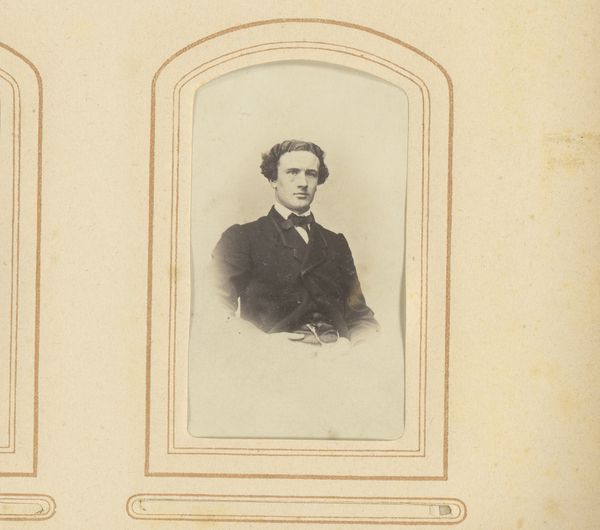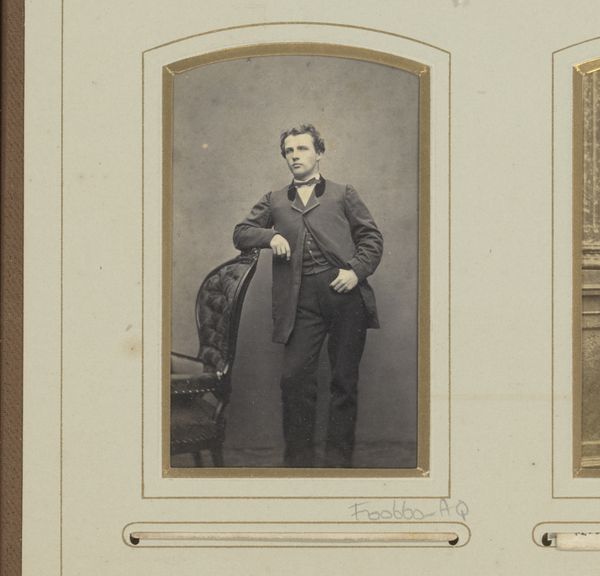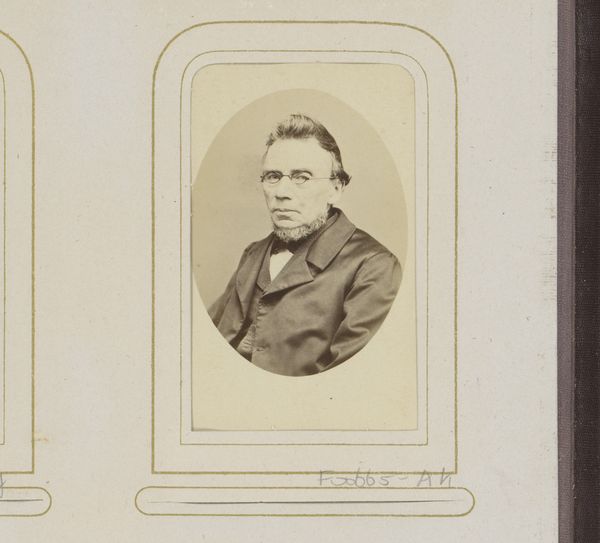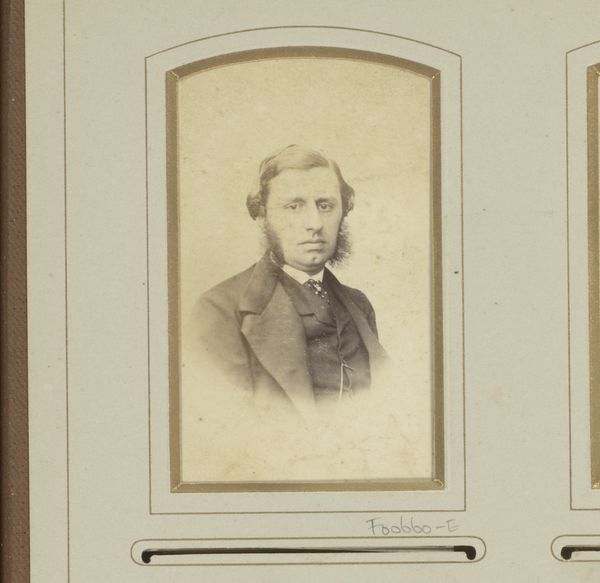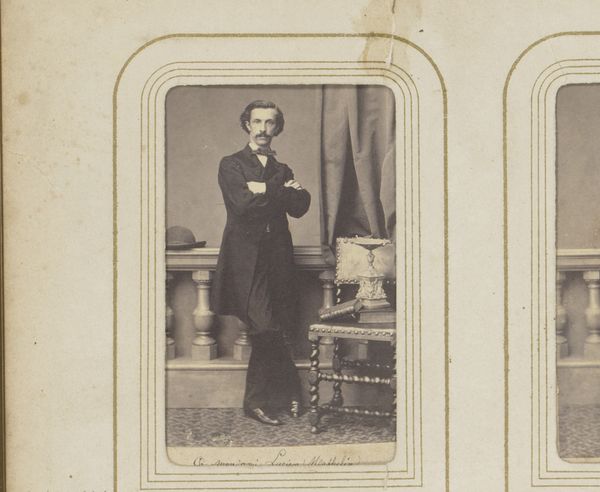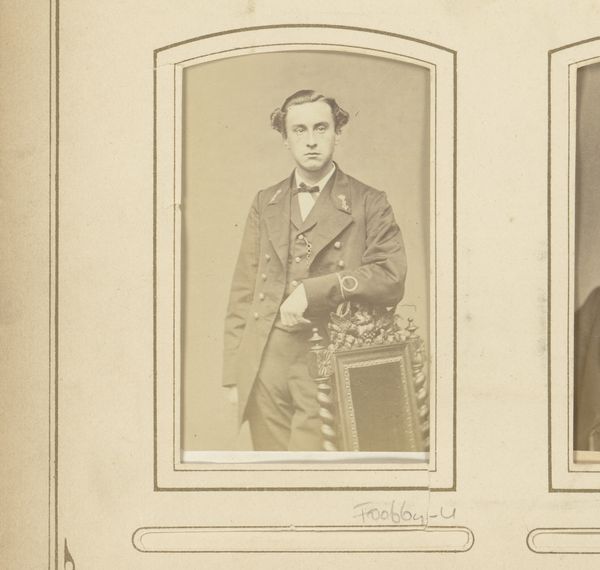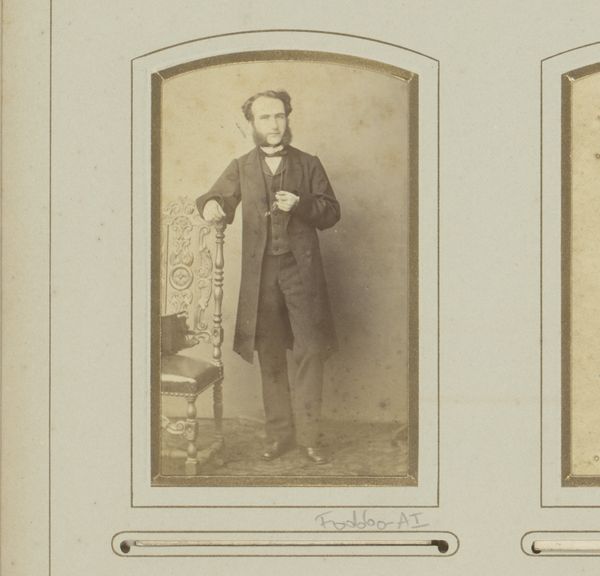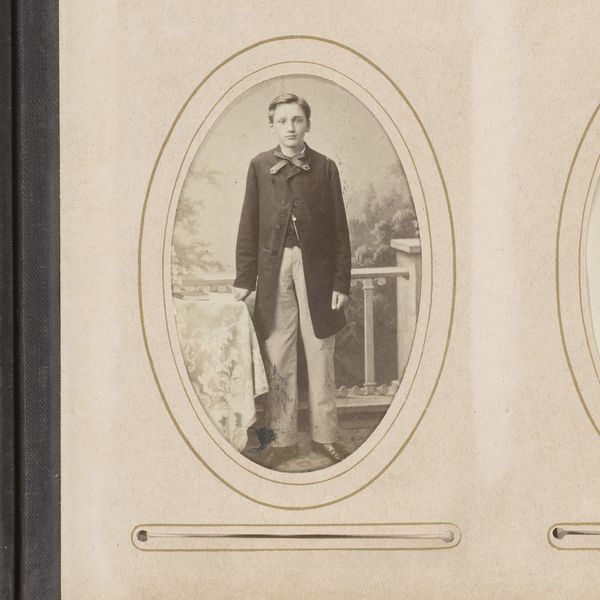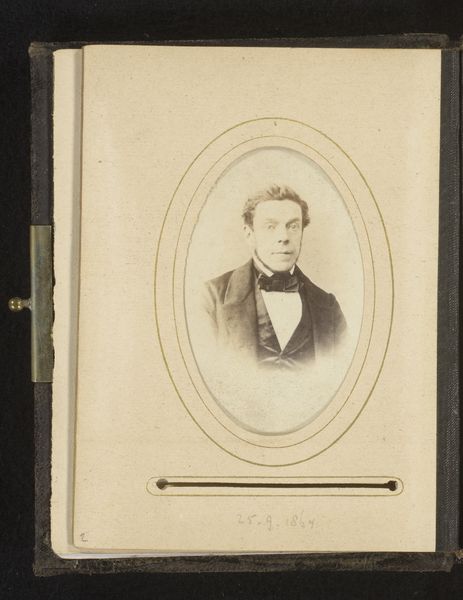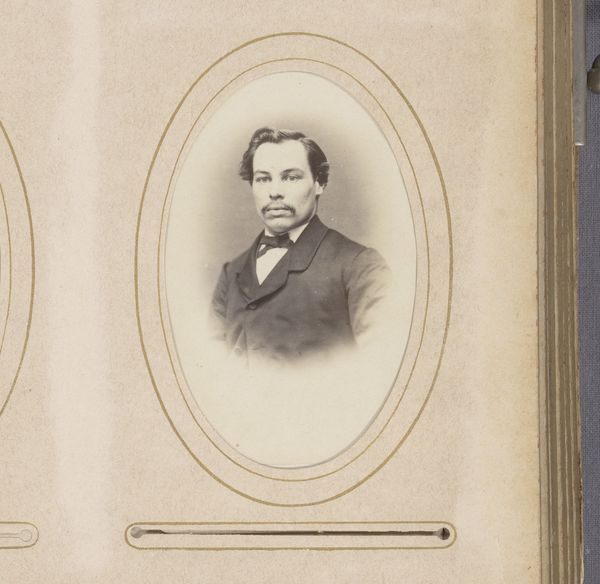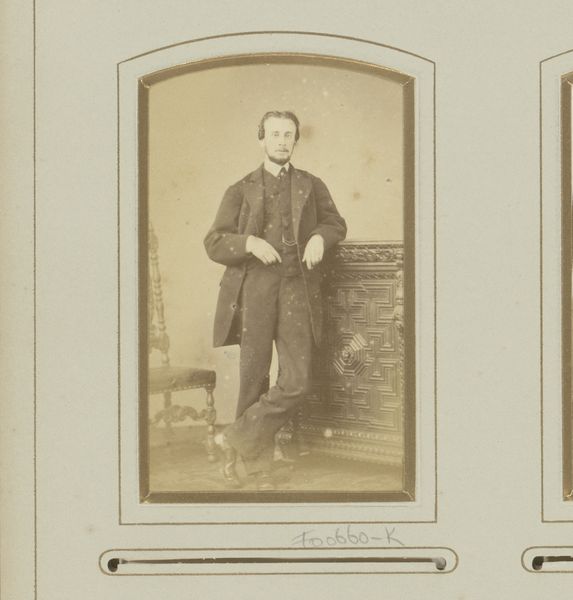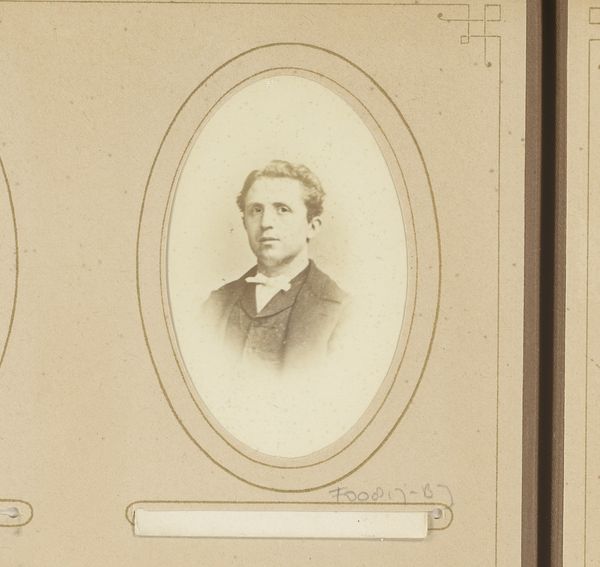
Dimensions: height 98 mm, width 58 mm
Copyright: Rijks Museum: Open Domain
This portrait of Carl Gustaf Sundberg, made by J. Lundbergh, offers a fascinating glimpse into the world of early photography. Photography in this period was an intricate process, far removed from our digital snapshots. This image was likely created using the wet collodion process, a technique that required coating a glass plate with chemicals, exposing it in a large format camera while still wet, and then developing it immediately. The resulting negative could then be used to make multiple prints on paper. Consider the labor involved: preparing the chemicals, meticulously coating the plate, carefully controlling the exposure time. The photographer was not just an artist, but a chemist and a craftsman. The final print, sepia-toned and mounted on cardstock, becomes a precious object, a testament to both the sitter's status and the photographer's skill. Looking closely, we can appreciate the material qualities of the photograph: the subtle tones, the texture of the paper, the very weight of the object in our hands. This portrait reminds us that even seemingly simple images have a rich history of craft, labor, and social context embedded within them.
Comments
No comments
Be the first to comment and join the conversation on the ultimate creative platform.
